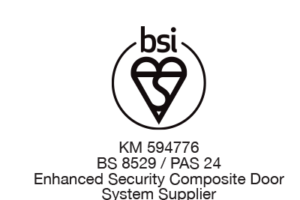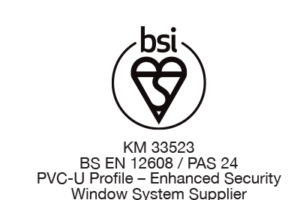








For years, architects, builders and designers have used Auto CAD – a software package that allows you to create two-dimensional objects and use the coding to transfer those designs over to CNC machinery and build ‘the real thing’. Later versions allow users to render 3D objects on rotational plains, making it an essential tool in everything from film CGI, through to developing and constructing new designs of doors and windows for anything from universities, to hospitals and large residential projects.
Now there’s a new kid on the block (if you’ll pardon the pun) that takes this concept to a new level, and at Profile 22 we’ve embraced this new technology with open arms.
BIM or Building Information Modelling is a virtual 3D model of a building, broken down into its component parts. So in laymen’s terms, it’s a virtual ‘Meccano’ kit of a building’s parts and structural layout that allows the user to simulate the actual dimensions of a building, and make changes in the virtual world before implementing them in the real one.
The idea itself isn’t new. It was first conceived in the 1970s and the first (admittedly very basic) packages were developed back in the 1980s when computer graphics were limited at best. Today’s BIM software gives astonishing degrees of accuracy and rendering, allowing a user to see in far greater detail the ‘finished effect’ before they convert a design into a working plan.
As we climb out of one of the worst building recessions in living memory, any tool that can be used to encourage the development of the industry has to be welcomed. So it’s hardly a surprise, then, that the government has thrown its support behind the use of BIM in the construction industry. It forms part of the Construction Strategy published in May 2011, when the Government announced its intention to require ‘…collaborative 3D BIM (with all project and asset information, documentation and data being electronic) on projects by 2016.’ Put simply, BIM is absolutely essential to the future of the industry, in the same way that Auto CAD has been in previous generations.
BIM is much, much more than simply a glorified drawing package, though. It is set to revolutionise the procurement and management of the built environment in a variety of different ways. It will transform the way in which buildings, infrastructure, and the utilities that serve buildings are planned, designed, built, and managed. It also allows companies to embed information within each component, giving them a wealth of uses throughout the building process. It can also provide a key component of the audit trail when managing costs. This embedded information means that plans will be far more detailed and specific, with easy access to each component’s data. Embedded data is also mobile-device friendly, making it a logistically practical tool for site visits, as well as office-based applications.
A purpose-built BIM model helps designers avoid expensive mistakes by trying out various options before they transfer a design to the ‘real world’. That in itself is incredibly useful, and now thanks to a library of pre-programmed components, it’s available for anyone to use. And because each component is stored in a central Cloud location, it can be easily accessed from anywhere.
So, for example, if you’re out at a site and a client wants to see how a particular type of vertical sliding window or flush casement windows would fit into a model, they can be accessed and inserted into the overall model of the building. The BIM system ensures that the changes made to the model are in proportion and positioned correctly, allowing the client to see the finished result. A final decision can then be based on additional imbedded information such as dimensions, cost and materials.
Like any modelling system, BIM does have its limitations. However, size isn’t one of them, and a BIM model can be used on any sized project without any problems. The key to this flexibility is the ‘component’ nature of the program. Once you have your basic structure then it is easy to incorporate standard pieces such as vertical sliding windows or fully reversible windows, because the format allows you to slot these sectors into the model, which then adjusts the parameters to fit.
Developers who are involved in multiple unit projects will also find BIM an essential tool. If you look at the average multiple unit building projects, you will find that while there may be, for example, a selection of two, three and four-bedroom units, each of those conforms to a standard footprint and layout. So by using BIM to incorporate key elements such as the positioning of windows and doors in a single three-bedroom unit, you can then extrapolate that format out to cover all of the other three-bedroom units within the development.
This can also be expanded further to cover multiple sites with the same format units, making it a cost-effective tool as well as a highly adaptive one.
The flexibility of BIM also means that if you are working on larger developments for commercial customers, the same principles can be applied. It can, in fact, act as a valuable time-saving device that also produces a uniform look that is essential for the success of a commercial project such as a hospital or school, where consistency throughout the development is important. This also allows developers to look at the energy-efficiency of the building as a whole, as well as control project costs more effectively too.
For developers and end users who want to ‘sell the sizzle’ on a project, BIM can be a powerful presentation and marketing tool that gives potential buyers or investors a highly rendered, 3D visual image. But because BIM contains much more information than merely the visual representation of a project, it can also be used to answer client questions or provide additional selling points during a presentation.
BIM isn’t just 3D – it’s multi-dimensional. Standard drawing packages are great at rendering the three spatial dimensions – width, height and depth. But what BIM does is add extra dimensions such as time and cost. All the information in context is delivered in an easy-to-understand format that can include everything from spatial relationships of various components such as windows and doors, through to manufacturer’s information and the properties of the materials used. Simply by hovering the cursor over the individual component the relevant information can be accessed instantly.
Because the BIM system is multi-layered, it also acts as an excellent conduit delivering information to everyone taking part in a project. So from architects through to window installation teams, everyone has access to the relevant information to ensure they get the job done.
BIM is useful for both domestic customers and our commercial partners. For domestic clients it gives them a chance to see how a particular window system would look in a three-dimensional spatial rendition that allows them to see it from different angles. Want to see what a full-tilt window would look like from outside? The BIM rendition can show you. Not sure which window type and style works best? The Profile 22 BIM library has renditions of several window types and styles, so you can compare and make an informed decision.
For our commercial partners, BIM is an invaluable tool. It helps you to plan your projects and decide in advance what system would work best. And in large or multiple unit developments it can also aid in costing the project, ensuring that specific materials comply with building requirements, or that there is consistency across the project. This is particularly important in older property re-development projects or building in conservation areas, where the aesthetics are a key part of your considerations.
At Profile 22, we’ve embraced the potential of BIM as part of our forward planning, and as an essential tool in our business development. We believe that BIM has a key role to play in all our customers’ projects, whether they’re a supplier providing complete units for developers, or one-off customers looking for additional information before making a final decision on which windows to choose.
Currently, we have a selection of BIM components in our online library, and we’ll be expanding that in the very near future to include Flush Tilt-Turn windows. As time progresses, our IT experts will add further renderings to the library, giving you a complete selection of all our products.
We believe that BIM isn’t exclusively for architects and developers, but has a role in everyone’s project. No matter how big or small, BIM lets you get a real feel for the look of a project before you commit to ‘real world’ construction. It delivers multi-dimensional data, from spatial renditions through to essential information on cost, materials and other considerations.
Put simply, it positions different elements of your build in context, allowing you to manipulate them before committing. We think it’s one of the most important tools in construction, which is why we’ve opened it up to everyone.
Find out more about Profile 22’s BIM Online library here.
https://en.wikipedia.org/wiki/Building_information_modeling
http://www.autodesk.com/solutions/building-information-modeling/overview